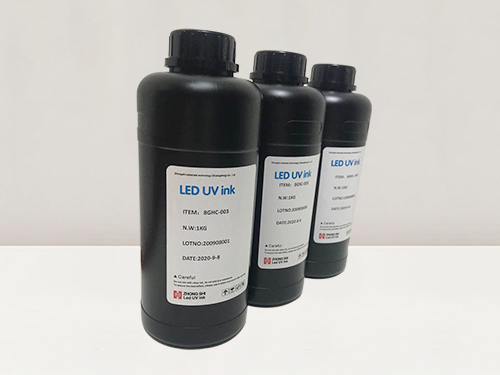The main issue that has the greatest impact on printing technology, printing quality, and post-processing during the use of UV ink is the curing problem of UV ink. Many process quality problems often stem from excessive or insufficient curing of UV ink. Therefore, it is necessary to first understand the factors that affect the curing of UV ink, and then adjust and control them during use to achieve the goal of controlling the quality of printed materials. There are various factors that affect the curing of UV ink, which can be summarized as follows:
1. UV radiation time
If the UV radiation time is too long, it will cause excessive curing; otherwise, it will cause incomplete curing. This requires that the printing speed must match the UV radiation power. The new lamp tube has sufficient power and sufficient ultraviolet light content (blue purple light), and the printing speed can be increased to reduce radiation time. After using the lamp tube for a period of time, the power will decrease, and the ultraviolet light content will decrease. The printing speed should be correspondingly reduced to increase radiation time. A light tube is not just bright and dazzling, but rather depends on whether the ultraviolet light it emits is sufficient.
2. UV radiation power
If the UV radiation power is insufficient, even if the radiation time is increased, it cannot be completely cured. Often, the surface of the ink layer is cured while the bottom layer is not. In the actual printing operation process, the power of the UV lamp gradually decreases with the passage of time. When the power drops to insufficient, the above problems will occur. Therefore, it is necessary to regularly check and maintain the UV curing system to ensure that the UV radiation power reaches enough, the generated UV light is sufficient, the energy is large enough, and there is a strong penetrating band to penetrate the ink layer and solidify to the bottom of the ink layer, so that the UV ink can be completely cured.
3. Temperature
Under normal working conditions, as the temperature rises, the curing rate accelerates. Therefore, the printing workshop should try to maintain constant temperature and humidity as much as possible. In low temperature and humid environments, it is necessary to add appropriate curing agents to prevent deinking caused by incomplete curing.
4. Ink pigment content
Experimental studies have shown that for a certain color of ink, the higher the pigment content of the ink, the slower the curing rate. This is because the pigment content is high, and the transmittance of the ink will decrease, thereby reducing the light curing speed, but the red pigment is slightly different. Due to the sensitizing effect of red pigment, as the content of red pigment increases, the curing rate of ink first increases and then decreases. This requires that when choosing a printing color sequence, dark ink should be printed first, and light ink should be printed later
